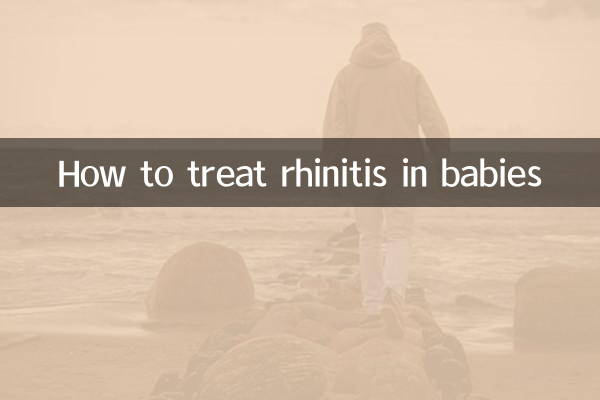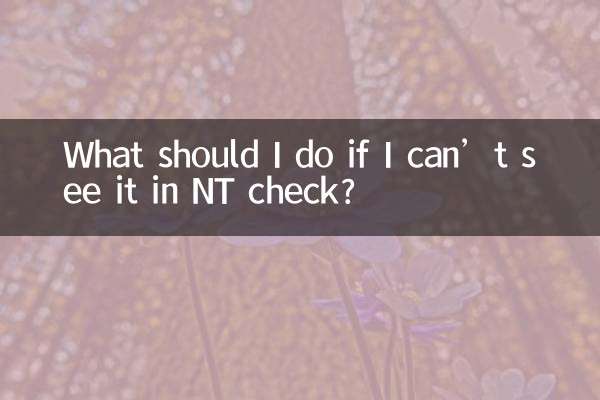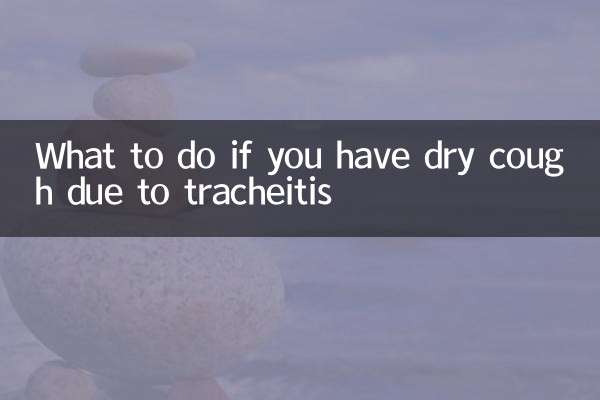How to treat rhinitis in babies: Hot topics on the Internet in the past 10 days and scientific response guide
Recently, the issue of rhinitis in infants and young children has become a hot topic among parents. Especially during the change of seasons, the search volume of related topics has soared. This article combines hot data and authoritative medical advice from the entire Internet in the past 10 days to provide parents with systematic solutions.
1. Statistics of hot topics related to rhinitis in the entire network (last 10 days)

| Ranking | Topic keywords | heat index | Main groups of concern |
|---|---|---|---|
| 1 | allergic rhinitis in infants | 85,000 | Parents aged 0-3 |
| 2 | First aid method for nasal congestion | 62,000 | Newborn parents |
| 3 | Rhinitis medication safety | 58,000 | Parents aged 1-6 years old |
| 4 | saline nasal rinse | 43,000 | Parenting Blogger |
| 5 | Differentiation between rhinitis and cold | 39,000 | primary care |
2. Identification of rhinitis types in infants and young children
According to the latest diagnosis and treatment guidelines issued by Beijing Children’s Hospital, rhinitis in infants and young children is mainly divided into three categories:
| type | Typical symptoms | High incidence age | duration |
|---|---|---|---|
| allergic rhinitis | Paroxysmal sneezing, watery nasal discharge, itchy eyes | More than 6 months | Attacks after exposure to allergens |
| infectious rhinitis | Purulent nasal discharge, fever, decreased appetite | any age | 7-10 days |
| Vasomotor rhinitis | Alternate nasal congestion, worsened by cold | 2 years old and above | Season related |
3. Treatment plans recommended by authoritative organizations
1.Basic care plan
• Normal saline spray: 3-4 times daily, use a 0.9% isotonic solution specially designed for infants
• Environmental control: maintain humidity at 50%-60%, remove mites regularly
• Breastfeeding posture adjustment: maintain a 45-degree angle during feeding to avoid nasopharyngeal reflux
2.Pharmacological Intervention Guide
| drug type | Representative medicine | Applicable age | Things to note |
|---|---|---|---|
| antihistamines | Cetirizine drops | ≥6 months | It is necessary to strictly follow the doctor’s instructions to control the dosage |
| Nasal hormones | Mometasone furoate nasal spray | ≥2 years old | Continuous use does not exceed 1 month |
| Decongestants | Physiological seawater nasal spray | All ages | It is prohibited to use it for more than 3 consecutive days |
4. Answers to TOP5 questions parents are concerned about
1.Q: Can adult rhinitis medications be used at reduced dosage?
A: Absolutely prohibited. The thickness of the nasal mucosa of infants and young children is only 1/3 of that of adults, so children-specific dosage forms are required.
2.Q: How to deal with nasal congestion that affects sleep?
A: You can try: ① Raise the head of the bed 30 degrees ② Smell your nose with bathroom steam for 5 minutes ③ Apply warm towel to the bridge of the nose (pay attention to the temperature)
3.Q: What are the warning symptoms that require immediate medical attention?
A: Emergency treatment is required if the following conditions occur: respiratory rate >50 times/minute, cyanosis of the lips, and milk refusal for more than 6 hours.
5. Suggestions for implementing preventive measures
According to the recommendations of the Pediatric Branch of the Chinese Medical Association, a three-level prevention strategy should be adopted:
| prevention level | Specific measures | Implementation points |
|---|---|---|
| primary prevention | allergen avoidance | Clean air conditioning filters regularly and avoid using stuffed toys |
| secondary prevention | Immunomodulation | Breastfeed for at least 6 months and supplement with vitamin D |
| Tertiary prevention | Symptom control | Establish a symptom diary to record triggers of attacks |
Conclusion:Treatment of rhinitis in infants and young children requires individualized plans, and parents should avoid blindly using online folk remedies. If symptoms persist for more than 2 weeks or recur, it is recommended to go to a pediatric ENT specialist for allergen testing and nasal endoscopy. You can usually observe the condition through "three observations": looking at breathing rhythm, looking at eating status, and looking at sleep quality, so as to achieve early detection and early intervention.

check the details

check the details